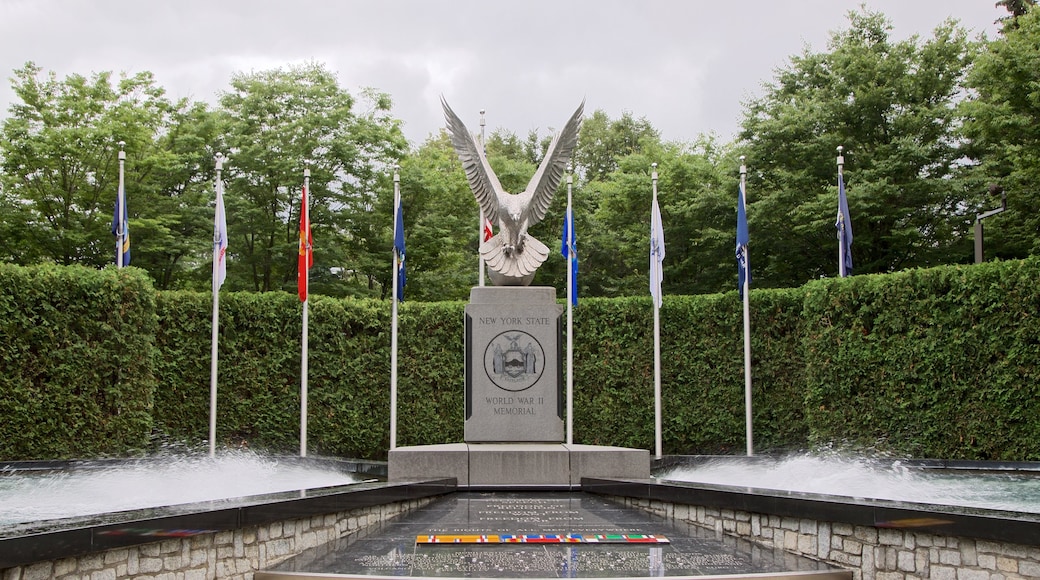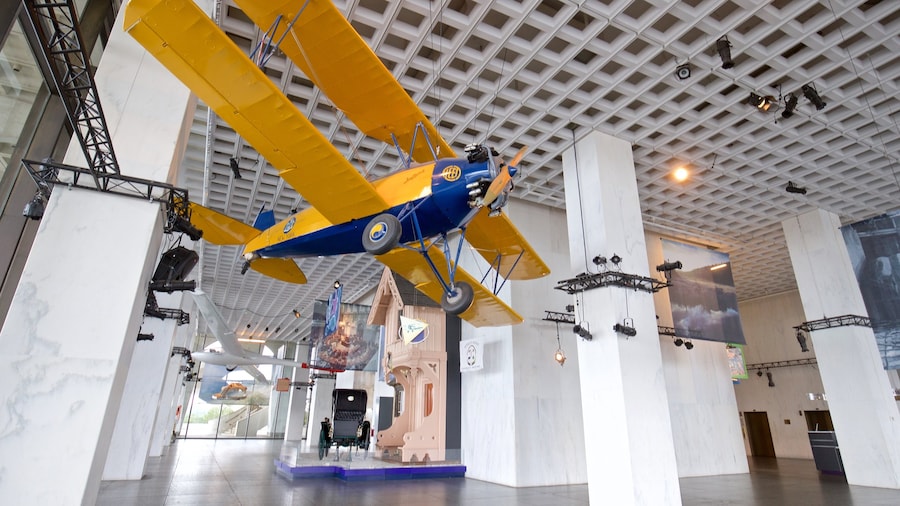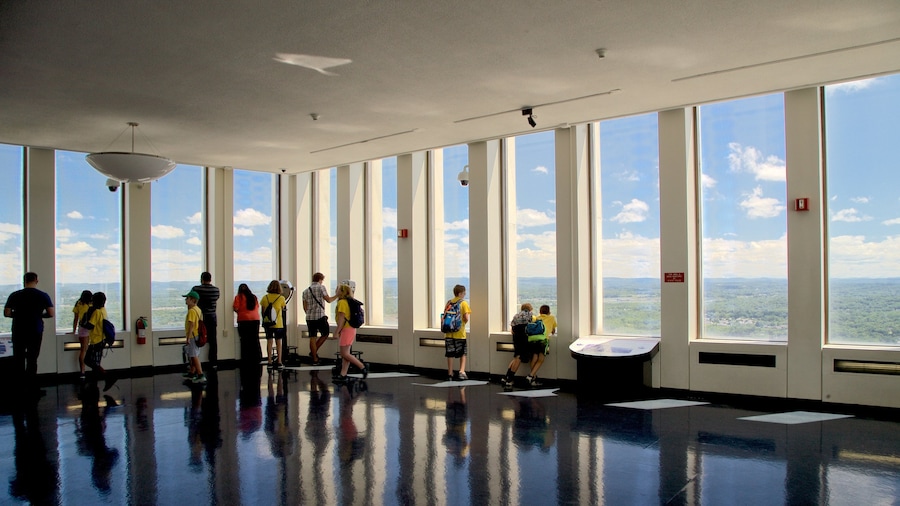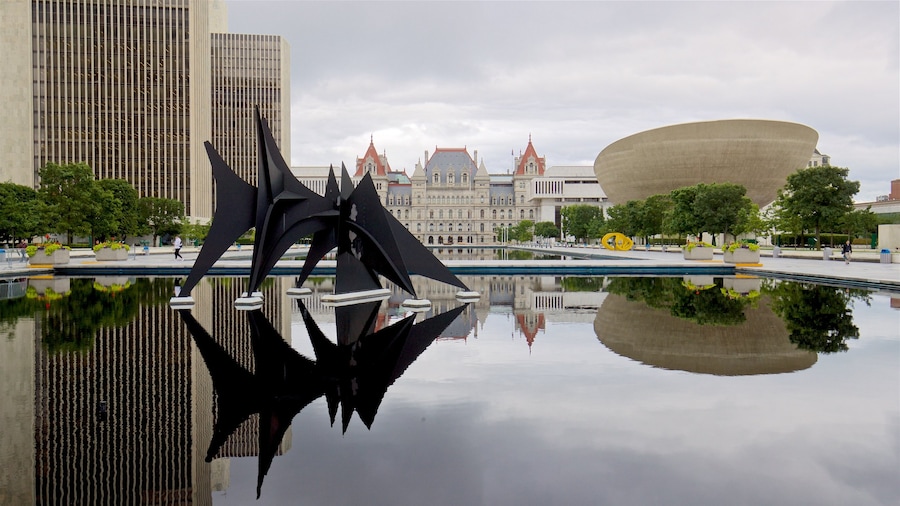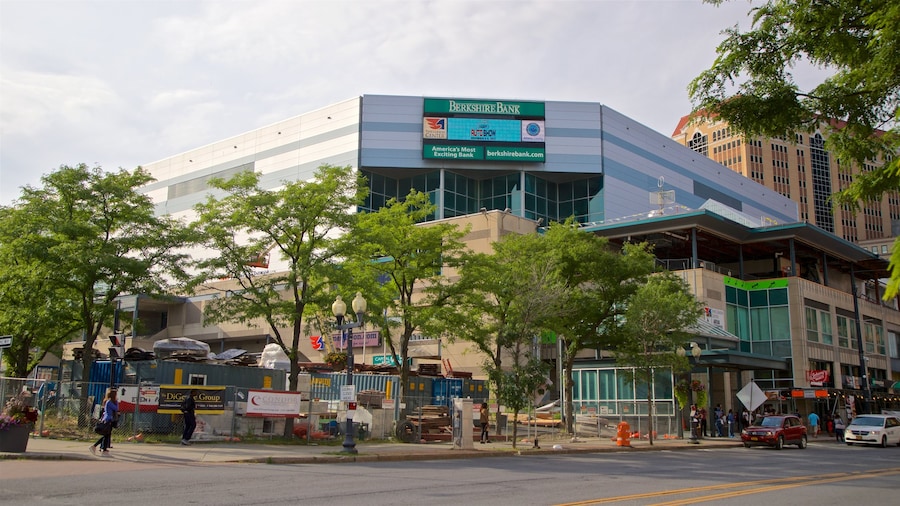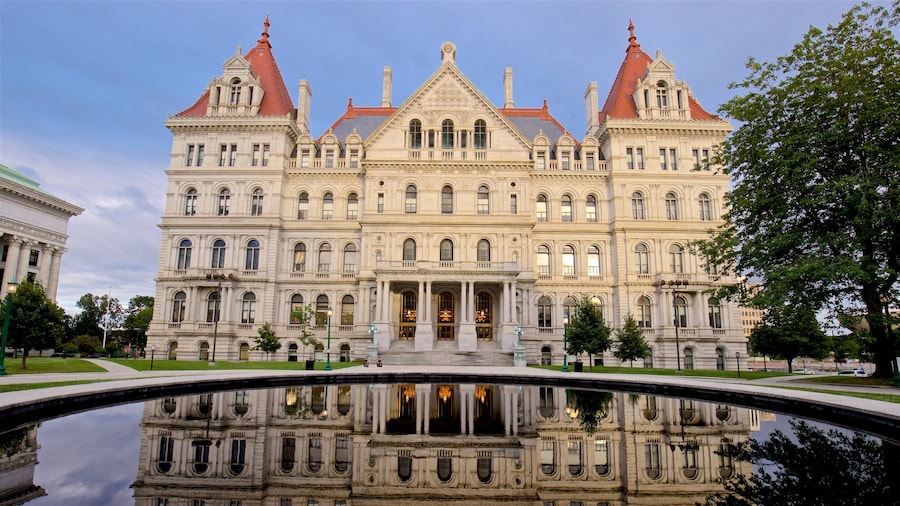Through interesting architectural and artistic elements, this moving tribute to the lives lost in the war stands on Empire State Plaza in Central Albany.
The World War II Memorial is an important reminder of history. Dedicated in 2001, the memorial brings together a variety of materials and references to evoke every aspect of that expansive war. Learn about the people from all walks of life who fought and sometimes lost their lives during its battles.
As you approach the memorial, note the turmoil of the two pools. Contrary to usual reflecting pools, these are kept in constant motion to symbolize the upheaval that the war brought onto both combatants and civilians. Walk slowly around the pools, starting on the right, where curved granite stones proclaim the names and dates of significant events in the European theater, from the Battle of the Bulge to the Invasion of Normandy. Cobblestones along the edge of the path symbolize the rough road traveled by those who fought.
On the northern panel dividing the pool in half, read the Four Freedoms laid out by Franklin Delano Roosevelt. Admire the bronze plaques depicting the ribbons of the primary service medals. Walk to the other side, where granite commemorates Pearl Harbor, the Battle for Iwo Jima and other significant events of the Pacific theater of the war.
Quotes adorn the southern side of the central panel, carving in stone thoughts from Douglas MacArthur and Dwight D. Eisenhower. From here, continue on to Albany’s other attractions with a greater sense of the effect of the war and the people who lived through it.
Located between the Capitol and the New York State Museum, Empire State Plaza is one of the most important spots in the state. Walk here in a few minutes from most Central Albany landmarks. Walk to it in 20 minutes or arrive by bus in 15 minutes from the Albany bus terminal. Drive from the Albany airport in 15 minutes. Metered parking is available on the street or in nearby garages.
The plaza and the World War II Memorial are open all day every day, but are most impressive during daylight hours.
